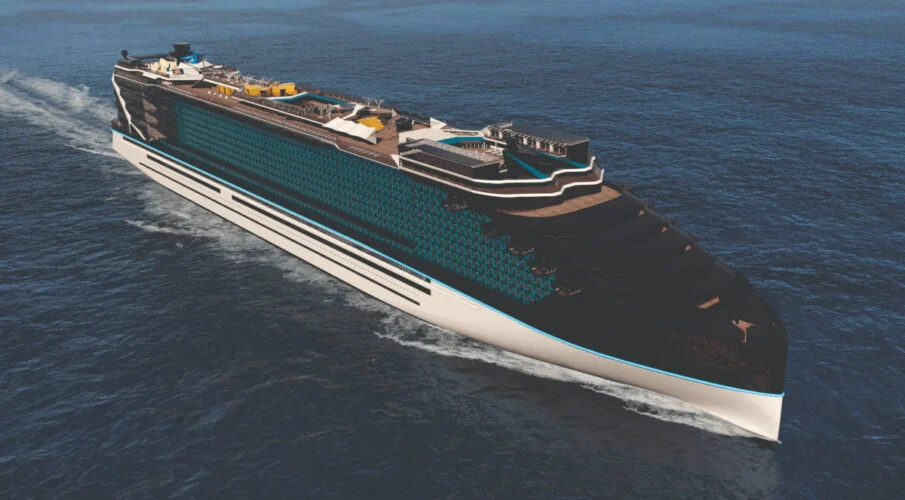
The cruise industry takes up sustainable tech, layouts, and practices to achieve the 2050 net-carbon-neutral targets. In doing so driving innovation.
As the global community continues to be more environmentally conscious, the cruise field is setting sail towards a cleaner future. Committed to being carbon neutral by 2050, cruise lines, ship makers, and research institutions continue to join forces to make sustainable technologies and practices which would revolutionize the way we travel on water.
Pioneering projects such as the NEcOLEAP and “Reverse” are rethinking cruise ship design. At the same time, industry giants like MSC Cruises lead the charge in sustainable technological change. From liquefied natural gas to methanol-powered vessels, the quest for carbon neutrality is pushing the cruise industry to change the boundaries of sustainability at the same time reshaping the future of maritime travel.
The NEcOLEAP Project
Startign out in February 2022, the basic purpose of the NEcOLEAP project is to make a climate-neutral cruise ship idea within the next few years.
The project will also seek to strengthen and expand innovative research and development within shipbuilding, making sure that the maritime sector continues to be at the forefront of sustainable technology also design.
The project is a combined development by Meyer Turku a shipping company in Finland, the Finnish government, Aalto University, and various more ones. It aims to make Finland a leading actor in sustainable shipbuilding.
This is a title that the Meyer Turku ship-making yard has been working hard on getting, as it is currently involved in Carnival Corporation’s Excel Class ships. Also the Royal Caribbean’s Icon of the Seas, also the TUI Cruises’ Mein Schiff 7.
A core part of the NEcOLEAP project is its direct connection to the Meyer Group’s long-term strategy. The group has decided to develop climate-neutral cruise ideas by 2025, and the NEcOLEAP project serves as a crucial step in hitting this goal.
The project’s success is going to demonstrate the viability of climate-neutral cruise ships at the same time help pave the way for more sustainable and responsible work within the sector. This is also where the ‘Reverse’ Project has a significant role.
The “Reverse” Project: Envisioning the Cruise liner of the Future
The Meyer Group revealed an innovative cruise ship concept this week called “Reverse,” giving us a peek into the future of sustainable cruise ship ideas.
While the design itself is a thing that has drawn the the greatest amount of attention, and not always in a desired manner, the technology behind the vessel is great and, more importantly, achievable with the technology now available.
Inspired by the sleek and dynamic shape of a rockhopper penguin, the “Reverse” features an enclosed glass façade, urban gardening areas, also drone landing pads. Its energy idea that relies on innovations such as using wave energy and using solar power, fuel cells, moreover wind energy to eliminate the demand for fossil fuels.
The “Reverse” project shows that this given NEcOLEAP project is achievable in the next several years. However, for now, it is almost entirely on the cruise lines on their own to get the ball rolling.
Committing to Sustainable Innovation
As one of the big players in the cruise industry, MSC Cruises has gone for a proactive approach to get to sustainability, trying to achieve the International Maritime Organization’s goals of a 40% carbon cut by 2030 and net-zero emissions by the middle of the century.
To accomplish these awesome goals, MSC Cruises has implemented various cutting edge technologies and practices, including low-noise hull designs, top notch waste processing systems, intelligent ventilation, air conditioning systems, also energy-saving LED lights systems.
However, MSC Cruises is not the only one. In line with the 2050 goals, many cruise lines are looking at the potential of liquefied natural gas (LNG) as ship fuel to limit their environmental footprint.
MSC World Europa
Although LNG has its detractors due to methane emissions during production and use, the industry looks at it as a stepping stone towards more sustainable fuel ideas, such as methanol or biofuel. Methanol, in particular, looks like a viable option, with many new build ships are being fitted with the capacity to run using Methanol.
Cruise lines also work with the port authorities to make use of shore power, allowing cruise ships to switch off their engines when they are docked. The only problem with shore power is this that it is only sustainable provided the power source is sustainable.
The Pursuit of Carbon Neutrality
The pursuit of carbon neutrality by 2050. Thus we can say that the cruise industry is serious when it comes to environmental responsibility and sustainable improvement.
In the coming years, as the planet becomes greener, the focus on sustainable initiatives are going to become increasingly important to passengers and stakeholders all the smae.
Various European countries are out lawing diesel from their countries. The steps to out lawing a diesel-burning cruise ship are not that far fetched for the government. However, one that has a massive impact on the hundreds of big and small cruise destinations in Europe.
This great NEcOLEAP project, MSC Cruises’ desire to achieve sustainability, the mid centry goals, LNG and Methanol-powered cruise ships, and innovative ideas like the “Reverse” project all show the industry’s dedication to creating a more enviromentally-friendly future for cruising. This will show that it isn’t just something the cruise industry wishes to do; it is something that it will have to do to remain operational










